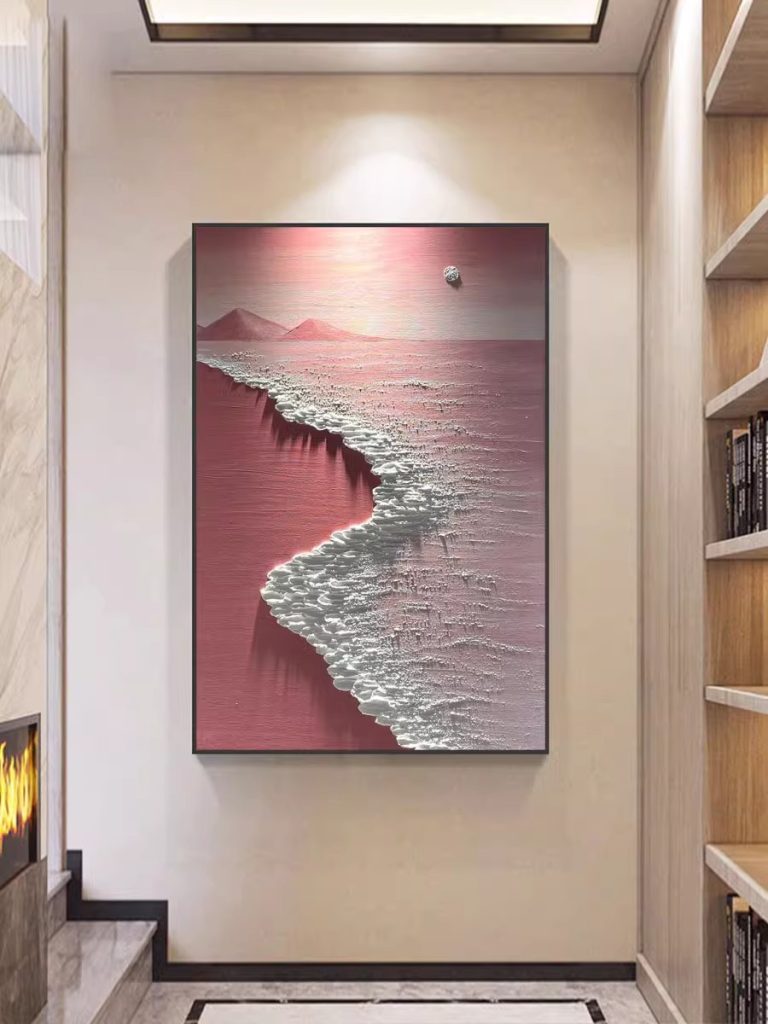Selecting the right oil painting canvas is an important foundation for oil painting creation. The quality and characteristics of the canvas will directly affect the final effect and preservation time of the work. The following introduces the selection methods for you from several key aspects such as material, texture, manufacturing process, size and shape:
Material selection
Linen: It is one of the most commonly used canvas materials in oil painting creation. It features high strength and wear resistance, capable of withstanding the weight of pigments and color-mixing oils as well as various operations during the painting process. The fiber structure of linen is tight, with moderate oil absorption, which enables pigments to adhere better to the surface and is less likely to deform. For instance, many professional painters, when creating large-scale oil paintings, will give priority to linen because it can ensure the stability and durability of the picture.
Cotton fabric: It has a relatively low price, a soft texture and strong oil absorption. Cotton fabric is a good choice for beginners or those engaged in some small-scale and experimental painting creations. However, the strength of cotton fabric is not as good as that of linen fabric, and it may become loose and deformed after long-term storage. For instance, when students are practicing the basic techniques of oil painting, using cotton canvas can reduce the cost of creation.
Chemical fiber fabric: It has the advantages of being waterproof, moisture-proof and not prone to mold, and is suitable for use in damp environments. Its surface is smooth, has poor oil absorption, and the pigment dries relatively quickly. However, the texture and artistic expressiveness of chemical fiber fabric may not be as good as those of natural canvas. For painters who pursue the texture of traditional oil paintings, it may not be the first choice.
Texture considerations
Coarse-textured canvas: The surface has a distinct granular feel and texture, which can enhance the adhesion and expressiveness of the pigment. It is suitable for depicting heavy and rough textures, such as mountains, rocks, trees, etc. When painting on a coarse-textured canvas, the paint can be better accumulated in the texture, creating a rich sense of layering. For example, when painting landscape oil paintings, a coarse-textured canvas can better represent the undulations of mountains and the rough texture of trees.
Medium-grain canvas: The texture is moderate, which can ensure that the pigment has a certain adhesion while not being too rough and affecting the fineness of the picture. It is a relatively universal canvas texture, suitable for various painting themes, such as figures and still life. Many painters choose medium-grain canvas when creating general oil paintings because it can balance the texture and fineness of the picture.
Fine-grained canvas: With a smooth and fine surface, it is suitable for presenting delicate and exquisite picture effects, such as portraits of people and flowers. Fine-grained canvas enables the paint to be applied more evenly on the surface, presenting delicate color transitions and details. For example, when painting portraits of people, a fine-grained canvas can better represent the texture of the skin and the delicate color changes.
Evaluation of manufacturing process
Application of base material: High-quality canvas is evenly coated with base material. The function of the base material is to seal the canvas fibers, prevent the pigment from seeping into the interior of the canvas, and at the same time increase the flatness and oil absorption of the canvas. When inspecting the canvas, you can touch the surface with your hand to feel the uniformity of the base material. If the base material is not applied evenly, it may cause color differences in the picture or uneven drying of the pigment.
The stretching process: The canvas should be stretched flat and tightly, without any looseness or wrinkles. The wooden strips of the taut frame should be dry and free of cracks, and the connection points should be firm. You can gently press the canvas with your fingers to feel its firmness, and at the same time observe whether the edges of the canvas are neat and whether the four corners of the stretched frame are right angles. If the canvas is not stretched well, it may deform during the painting process, affecting the effect of the picture.
The size and shape are determined
Size selection: Determine the canvas size based on the creative theme and display space. If it is a large-scale thematic creation, such as historical themes or landscape masterpieces, a larger-sized canvas should be chosen to fully display the grandeur and details of the picture. For some small decorative paintings or practice works, a smaller-sized canvas can be chosen. For instance, when displaying an oil painting in the living room, the appropriate canvas size can be selected based on the size of the living room’s walls and the overall decoration style.
Shape adaptation: Common canvas shapes include square, rectangular, circular, etc. Different shapes are suitable for different creative themes and display methods. The square canvas gives people a sense of stability and solemnity, and is suitable for presenting symmetrical and regular pictures. The rectangular canvas is more flexible and suitable for depicting scenes such as landscapes and figures that have a sense of extension. The circular canvas has a unique visual effect and is suitable for expressing some cohesive themes, such as flowers and still life.
